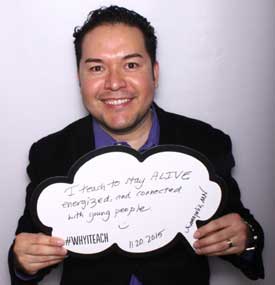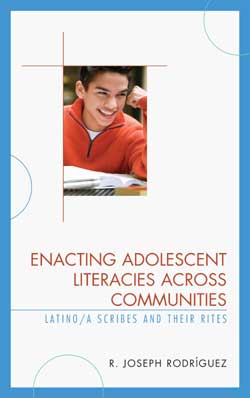Creativity Salon: An Interview With R. Joseph Rodríguez
 Years ago, when Joseph was a teenager and I was an administrator at the University of Texas at El Paso (UTEP), he wrote me, sent me his photo and asked if he could be my poet friend. I treasured his letter, and I deeply treasure his friendship. I believe that Joseph, now a UTEP professor, is a gifted and committed educator. I am excited about his new book. Welcome to our Creativity Salon, Joseph, mi amigo.
Years ago, when Joseph was a teenager and I was an administrator at the University of Texas at El Paso (UTEP), he wrote me, sent me his photo and asked if he could be my poet friend. I treasured his letter, and I deeply treasure his friendship. I believe that Joseph, now a UTEP professor, is a gifted and committed educator. I am excited about his new book. Welcome to our Creativity Salon, Joseph, mi amigo.
1. Do you think of yourself as creative? If yes, have you always thought of yourself as creative?
I fondly remember creativity appearing all around me since I was a young boy. For instance, I recall the artistic planning and deep thinking of my mother, grandmother, and great-aunts in their crocheting, sewing, stitching, listings, prayers, and writings that included their families.
Also, there was applied mathematics for budgeting and constructing that my father, grandfather, and uncles wrote on scrap paper envelopes and wooden boards and planks. Their actions drew me to their ideas and creation. These caring adults were all models, and they invited me to join them and practice.
Thus, long ago I followed the creative, dancing, and glowing mind. Imagination enlivens so much that I feel energized as I create, yet stillness is just as nourishing for my being creative. Although I am far from my boyhood now, the creativity I see and hear among many children, adolescents, and adults keeps me going.
 2. How does the above answer apply to your new book?
2. How does the above answer apply to your new book?
Since beginning my graduate studies in the late 1990s, I kept notes about literary studies and literacy education. I wanted to write a book that documented both in action. Through my ethnography research, I documented how students and teachers are being and becoming cultivated through various literacies and opportunities to gain scribal identities.
I met students who persisted in a creative mode and made gains with opportunities presented by their teachers and librarians, even when test scores said otherwise. The young people kept going, reading, and learning for understanding–in and out of the classroom.
The book took five years: one year to find research sites, two years for gathering research data, and two years dedicated to writing (while I was also teaching and working at The University of Texas at El Paso).
3. What do you enjoy reading and why is reading important in your life?
Reading fuels my life. I read poems daily. I pay attention to a poet’s use of language arts. A few days ago, I re-read two poems you published in 1986. The poems changed my life when I first read them in 1990.
Your poem “University Avenue” was hung on a wall in the dormitory rooms I inhabited all through my undergraduate studies, while the poem “Sonrisas” reminds me of the rooms we enter and what we overlook. Both poems energize me in my work and remind me to pay attention.
The children’s book Last Stop on Market Street (2015) by Matt de la Peña (author) and Christian Robinson (illustrator) was a wholesome ride to read and experience. A few months ago, I got to perform it for my friend Kimberly’s son, Elliott, while we rode the MARTA in Atlanta.
This month I finished reading The Immortal Life of Henrietta Lacks (2010) by Rebecca Skloot. I learned that Lacks’s cells possess geographies we follow today.
I believe reading is a form of breathing that nourishes the mind and spirit. My imagination comes alive as I read, and I also revel in the quiet while reading and re-reading. “Bookjoy!” you call it. Hence, I read on.
Wonderful and inspiring interview, both by the interviewer and the interviewee!